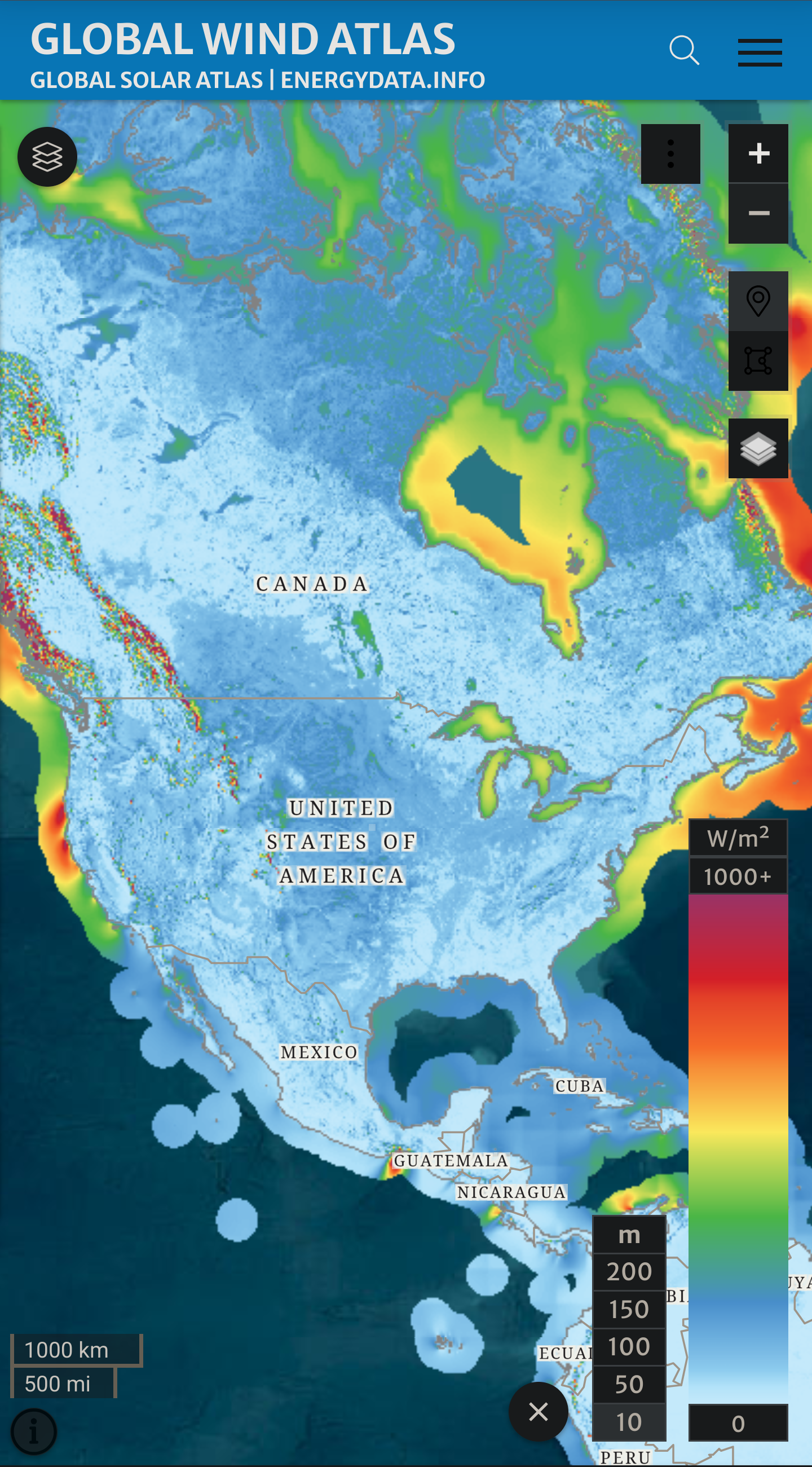Capitalism makes abundance problematic.
Supply side Jesus says put your faith in the wisdom of the CEO.
The answer is batteries. And dismantling capitalism, but batteries first
A big flaw in German energy policy that has done a great job in expanding renewables, includes not giving its industry variable rates, that lets them invest in batteries, and schedule production more seasonally, or if they have reduced demand due to high product prices from high energy costs, just have work on the good days.
Using EVs as grid balancers can be an extra profit center for EV owners with or without home solar. Ultra cheap retail daytime rates is the best path to demand shifting. Home solar best path to removing transmission bottlenecks for other customers. Containerized batteries and hydrogen electrolysis as a service is a tariff exempt path at moving storage/surplus management throughout the world for seasonal variations, but significantly expanding renewables capacity without risking negative pricing, and making evening/night energy cheaper to boot.
Nah, lets squash capitalism first.
Not saying we shouldn’t do both, but in reality waiting to destroy capitalism before fixing the grid just means you have too much theory and not enough praxis.
Lets squash it with batteries, they are heavy for a reason.
Batteries for something like this would be something like a lake on top of, and at the bottom of, a mountain.
Then you use excess power to move water up, and when you need power, the water comes down through a turbine.
Honestly, this attitude is downright suicidal for our species right now. Capitalism took centuries to develop. Anything that replaces it will form over a similar time scale. And with climate change, that is time we do not have.
I’ve got some bad news though. If our markets keep ignoring the environmental cost of… well, pretty much anything, as they always have, capitalism will also fuck us over in the long run. I’ve even heard it’s already happening…
CapitalistsPeople in just about every system ignore negative externalities, which are defined as costs borne by other people for the benefits that they receive themselves. Ironically, capitalism might be the best short-term solution, if only we had the political will. One of the major functions of government is to internalize negative externalities, via taxes and regulations. It’s easy for a factory owner to let toxic effluent flow into the nearby river, but if it costs enough in taxes and fines, it’s cheaper to contain it. We just need to use government regulations to make environmental damage cost too much money, and the market would take care of re-balancing economic activity to sustainable alternatives. The carbon tax is a well-known example of this technique, but we’ve seen how well that has gone over politically. Still, it’s probably easier to push those kinds of regulations in a short time frame than to fundamentally revamp the entire system.A non-functioning government is also a feature of capitalism, though.
It’s funny how capitalist apologists in this thread attack the format of a tweet and people not reading the actual article, when they clearly haven’t read the original article.
Negative prices are only mentioned in passing, as a very rare phenomenon, while most of it is dedicated to value deflation of energy (mentioned 4 times), aka private sector investors not earning enough profits to justify expanding the grid. Basically a cautionary tale of leaving such a critical component of society up to a privatized market.
Without reading the article, I could already see what the problem was.
Unless you have capital to invest, you can’t expand or improve the power grid. That capital can either come from the gov’t–through taxation–or from private industry. If you, personally, have enough capital to do so, you can build a fully off-grid system, so that you aren’t dependent on anyone else. But then if shit happens, you also can’t get help from anyone else. (Also, most houses in urban areas do not have enough square feet of exposure to the sun to generate all of their own power.)
Fundamentally, this is a problem that can only be solved by regulation, and regulation is being gutted across the board in the US.
That’s not the problem the article gets to. The capital is there. Capital is being dumped into solar at breakneck speed. That’s the problem.
As more solar gets built, you get more days when there’s so much excess solar capacity that prices go near zero, or occasionally even negative. With more and more capacity around solar, there is less incentive to build more because you’re increasing the cases of near-zero days.
Basically, the problem is that capitalism has focused on a singular solution–the one that’s cheapest to deploy with the best returns–without considering how things work together in a larger system.
There are solutions to this. Long distance transmission helps areas where it isn’t sunny take advantage of places where it is. Wind sometimes blows when the sun isn’t shining, and the two technologies should be used in tandem more than they are. Storing it somewhere also helps; in fact, when you do wind and solar together, they cover each other enough that you don’t have to have as much storage as you’d think. All this needs smarter government subsidies to make it happen.
As a side note, you seem to be focused on solar that goes on residential roofs. That’s the worst and most expensive way to do solar. The space available for each project is small, and it’s highly customized to the home’s individual roof situation. It doesn’t take advantage of economies of scale very well. Using the big flat roofs of industrial buildings is better, but the real economies of scale come when you have a large open field. Slap down racks and slap the solar panels on top.
If what you want is energy independence from your local power utility, then I suggest looking into co-op solar/wind farms. If your state bans them–mine does–then that’s something to talk to your state representatives about.
Transmission is tough. But the solution from too much solar investment driving down profits would be to invest that same money into storage. That seems like a natural follow up.
Imagine your profit if you can charge your storage with negative cost power!
It’s one of the solutions, yes.
But let’s look at this more broadly. The idea of combining wind/water/solar/storage with long distance transmission lines isn’t particularly new. The book “No Miracles Needed” by Mark Z. Jacobson (a Stanford Professor of Civil and Environmental Engineering) outlined the whole thing in 2023, but was the sum total of the author’s insight that he had had over a decade prior. Dumping all the money in one was never going to get us there.
Capitalism does sorta figure this out, but it takes steps of understanding as it focuses on one thing at a time. The first step dumps money into the thing that’s cheap and gives the best ROI (solar). Then there’s too much of that thing, and the economics shifts to covering up the shortfalls of that part (be it wind or storage or whatever). That makes it better, but there’s still some shortfalls, so then that becomes the thing in demand, and capitalism shifts again.
It does eventually get to the comprehensive solution. The one that advocates in the space were talking about decades before.
The liberal solution–the one that leaves capitalism fundamentally intact–is to create a broad set of government incentives to make sure no one part of the problem gets too much focus. Apparently, we can’t even do that.
It doesn’t take advantage of economies of scale very well.
You missed my point; I was talking about being entirely off-grid there. So unless the homeowner in question also has a large industrial building with a flat roof, we’re back to where I said that they didn’t have enough generative capacity to not be reliant on a power grid, at least in part.
If what you want is energy independence from your local power utility,
No, I want energy independence period. Not just from the local utility, I want independence from a co-op as well. I want to have my own well so I’m not relying on someone else to deliver water. I want enough arable land to grow most, or all, of my own food. This isn’t compatible with living in a city. (And part of the reason I want to generate my own power is so that I can use all electric vehicles.)
You missed my point. What you assumed the article said was completely off base.
No, I want energy independence period. Not just from the local utility, I want independence from a co-op as well.
Then what you’re asking for is a more fractured human society. This kind of independence from others is an illusion and is not compatible with how humans have evolved.
Wow, someone actually explaining the problem correctly. I’ll also mention that part of the fix should be on the demand side. Using your home as a thermal battery can load shift HVAC needs by hours, and with a water heater, it works even better. That’s not even talking about all the other things that could be scheduled like washer/dryers, dish washers, EV charging, etc.-
the real economies of scale come when you have a large open field.
And before anyone bothers you about the impact of turning fields into solar farms, I’ll add that we (the US) already have more farmland dedicated to energy production (ethanol corn) than would be necessary to provide our whole electricity demand.
And before anyone bothers you about the impact of turning fields into solar farms, I’ll add that we (the US) already have more farmland dedicated to energy production (ethanol corn) than would be necessary to provide our whole electricity demand.
Oh hell yes. 40% of the corn is grown in the US for ethanol, and it’s a complete and utter waste. Even with extremely optimistic numbers the amount of improvement is close to zero. It might be the worst greenwashing out there; sounds like you’re doing something, but its benefit is likely negative.
We have the land. That’s so not a problem.
deleted by creator
oh no the power is too cheap. God forbid our trillions of tax dollars go to something actually useful and good for the people oh well looks like we will get the F-47 instead and pay it to private military contracts 😂
We need more military! Cut social security!
Wasn’t there a town in China that produced such a glut of surplus electricity that they didn’t know what to do with it? And it was 100% solar?
I guess the biggest bottleneck for renewables is energy storage.
Pretty much. Once we got that covered there is no excuse anymore.
It’s basically solved. Sodium batteries are cheaper and much more durable than lithium batteries, and are currently being commercialized. Their only downside is that they are heavier, but that does not matter for grid-scale storage.
Story of 2010s Germany as well.
Problems for Capitalism are Solutions for Humanity
Who is “we”? Fuck that.
The capitalist class?
Hear me out: a giant water balloon. Roughly the size of the sun.
Context: This was a tweet thread from 2021:
https://xcancel.com/techreview/status/1415359221168709636
Here is the full article: https://www.technologyreview.com/2021/07/14/1028461/solar-value-deflation-california-climate-change/
TL;DR: The issue is Capitalism.
The question comes down to this. How do you incentivize work other than with money?
I would post that passage from Grapes of Wrath about oranges. But copy-paste doesn’t work on my phone
I got you.
The works of the roots of the vines, of the trees, must be destroyed to keep up the price, and this is the saddest, bitterest thing of all. Carloads of oranges dumped on the ground. The people came for miles to take the fruit, but this could not be. How would they buy oranges at twenty cents a dozen if they could drive out and pick them up? And men with hoses squirt kerosene on the oranges, and they are angry at the crime, angry at the people who have come to take the fruit. A million people hungry, needing the fruit- and kerosene sprayed over the golden mountains. And the smell of rot fills the country. Burn coffee for fuel in the ships. Burn corn to keep warm, it makes a hot fire. Dump potatoes in the rivers and place guards along the banks to keep the hungry people from fishing them out. Slaughter the pigs and bury them, and let the putrescence drip down into the earth.
There is a crime here that goes beyond denunciation. There is a sorrow here that weeping cannot symbolize. There is a failure here that topples all our success. The fertile earth, the straight tree rows, the sturdy trunks, and the ripe fruit. And children dying of pellagra must die because a profit cannot be taken from an orange. And coroners must fill in the certificate- died of malnutrition- because the food must rot, must be forced to rot. The people come with nets to fish for potatoes in the river, and the guards hold them back; they come in rattling cars to get the dumped oranges, but the kerosene is sprayed. And they stand still and watch the potatoes float by, listen to the screaming pigs being killed in a ditch and covered with quick-lime, watch the mountains of oranges slop down to a putrefying ooze; and in the eyes of the people there is the failure; and in the eyes of the hungry there is a growing wrath. In the souls of the people the grapes of wrath are filling and growing heavy, growing heavy for the vintage.
Thanks. I love this quote. But it pisses me off so bad
I dream of humans one day building a Dyson swarm around the Sun and becoming a Kardashev type 2 civilization. It’s a magnificent dream that we probably must one day accomplish or accept extinction.
But that is one serious problem with it. Unless it’s managed democratically, one psycho could gain control over all of it, then yeah, they could literally block out the Sun for anyone who won’t pay for sunlight.
This is what the Cabal is doing !!
deleted by creator
wow, its almost like the government that we pay taxes to should be what’s powering the country and not private corporations that are only concerned about profits 😋
The original article literally frames it as an economic problem under capitalism. Most of the article is about value deflation, not about the niche case of storing excess energy until it is profitable to sell again.
Lower prices may sound great for consumers. But it presents troubling implications for the world’s hopes of rapidly expanding solar capacity and meeting climate goals. It could become difficult to convince developers and investors to continue building ever more solar plants if they stand to make less money or even lose it https://www.technologyreview.com/2021/07/14/1028461/solar-value-deflation-california-climate-change/
Maybe take a break from the capitalist apologia to understand that this shouldn’t be a problem for a society that is trying to move away from cooking the planet.
deleted by creator
“Instead of trying to solve the problem we currently have, with the systems and tools that are there, how about we forget about the problem and work on something much much harder instead”.
Don’t get me wrong you’re absolutely free and welcome to advocate for systemic solutions. But don’t attack people working on alleviating symptoms in a practical way or I’ll call you an accelerationist. “Here’s how we implement socialism! Step one: Burn the planet”.
If you think the problem is being solved in the current system I will leave you to your delusions.
Go ahead, enlighten us. What is that magical praxis that will turn the world socialist before the Netherlands sink into the ocean?
Capitalism sucks, yes, but you can count on the self-interest of capital. Furnish regulation such that the thing we want them to do has the best ROI, they’re going to do it. Hard to implement? Well then guess what’s even harder to implement.
The RoI of renewables is already heavily subsidized by the government, and it is still unable to compete with that of fossil fuels. Carbon offsets/credits, a market solution, are very often useless. And that’s when solutions are even passed against all the lobbying. There is no market solution out of this. The sooner social democrats realize this, the better.
If you’re describing nearly free and unlimited electricity as a problem, you may want to reconsider some things.
It’s how capitalists think about land, water, air, etc.
… And violently attacking people by depriving them of these needs.
It’s a very capitalist way of thinking about the problem, but what “negative prices” actually means in this case is that the grid is over-energised. That’s a genuine engineering issue which would take considerable effort to deal with without exploding transformers or setting fire to power stations
Oh, look! A challenge. And a business opportunity! Just get a mortgage, buy some land in the middle of nowhere and make a reverse hydro plant.
Oh, I forgot. Banks don’t loan money for stuff not already existing or net-harmful hyped-up bullshit like AI and crypto.
Home owned windmills, solar panels and battery storage solves that.
Edit: Look at this awesome diagram of how it’s done for a hybrid setup that’s about $400 on Amazon.

Home owned windmills are almost a total waste. Its surprising how little electricity they generate especially given how much the cost to buy and install. Some real numbers. A 400w can cost almost $18k to buy and install. A 410w solar solar panel is about $250 + $3k of supporting electronics and parts. And that same $3k can support 10+ more panels. I looked into it myself really wanted it to be worth it for home, but it just isn’t. Now utility grade wind? Absolutely worth it. You need absolutely giant windmills with massive towers, but once you have those, you can make a LOT of electricity very cost effectively.
Solar panels worth it? Yes. Absolutely.
Batteries, not quite there yet for most folks. Batteries are really expensive, and don’t hold very much electricity $10k-$15k can get you a few hours of light or moderate home use capacity. For folks with really expensive electricity rates or very unreliable power this can be worth it financially, but for most every else. Cheaper chemistry batteries are finally starting to be produced (Sodium Ion), but we’re right at the beginning of these and there not really any consumer products for home made from these yet.
Yeah, right now end of life EV batteries are great for making your own power storage but that’s a level of diy beyond what 95% of people are willing or able to do
What’s infuriating is that we had electric cars before ICE powered cars. 1899. If we would’ve been investing money and effort into research for battery technology since then, we wouldn’t have this problem. Salt batteries, solid state batteries, and other promising tech is in it’s infancy because we just started to take this seriously as a society like 10 years ago.
Better late than never but it grinds my gears that the best argument against solar and wind is power storage requirements due to unpredictable power generation. Like this is an extremely solvable problem.
Yeah, right now end of life EV batteries are great for making your own power storage but that’s a level of diy beyond what 95% of people are willing or able to do
End of life EV batteries are great for grid-scale operators doing power storage, but I highly recommend against homeowners use them this way. Not just because they are complex DIY projects as you point out, but because the EV batteries that are aging out of car use are NMC chemistry. These are great for high density power storage, which you want in a car, but they are susceptible to thermal runaway if they get too hot. The original Tesla Powerwall and Powerwall 2 also used these same chemistry batteries. I wouldn’t want these in my house. However, in a utility grid scale? Sure, they won’t be anywhere near people so in the unlikely event they do catch fire its a property problem, not a lost human life problem.
I understand your concern, I totally agree that the volatility isn’t ideal, but putting it in a steel box outside your house isn’t that beyond the scope for a diy-er. Envision it the same way a generac sits outside and ties in to your house but with a safe enough enclosure.
As long as you check the cells you use when you deconstruct the car battery it should be fine. All the projects I watch online they don’t even need the liquid cooling system that it utilized when it was in the car because the discharge rate is so far below the C rating the battery that they don’t generate great like when they are in cars
I understand that cell could go bad though at any time, so the box is necessary imo
Oh yeah, super expensive. /s
https://www.amazon.com/dp/B087BY2YV7/?
The first link that came up: https://www.bobvila.com/articles/best-home-wind-turbines/
Ahh I get it now. You have no idea what you’re talking about. You have the smallest understanding of something and assume that is everything. You’re so very far away from understanding the practical applications and limits. You’re also clearly not interested in learning, so I’ll leave you to your impractical delusions.
Oh I’m willing to learn. Explain it to me.
Did you not look at the specs on that product? It only produces energy when winds are above 7mph and don’t actually hit the rated output unless the winds are almost 35mph.
Almost none of the country averages an amount of wind power per square meter equivalent to the rating on home turbines at 10 meters above ground level (yellow and red on this map):

Compare to this map of average insolation:

It’s a hybrid solar and wind. Also, that’s why you have batteries for storage.
Why not skip the middleman and go straight solar, then?
Wait so the same people that can’t drop 500 USD for an emergency are expected to drop 300 USD for a wind turbine and provide the installation of it to boot is that right
“put the excess energy into batteries” is an idea, and is already pretty much what is done, but the large scale implementation still requires a lot of time, effort, and expense.
How, exactly, does that solve anything? It’s not like we can add some kind of magic automatic residential cutoff system (that would just make it worse) and residential distribution is already the problem! Residential solar is awesome (tho home batteries are largely elon propaganda…) but they only contribute to the above issue, not solve it. There are ways of addressing it, but they’re complicated and unglamorous.
It’s not like we can add some kind of magic automatic residential cutoff system
Of course we can. They’re called Microgrid Interconnection Devices (MIDs).
that would just make it worse
Microgrids that can disconnect from the utility at appropriate times may in fact make it better. If homeowners responded to utility alerts of high demand and opted to disconnect from the grid during those times while still having power, that would just make grid operators and home owners happier.
residential distribution is already the problem!
Microgrids are the solution!
tho home batteries are largely elon propaganda…
While residential BESSs are largely Tesla based, they are absolutely key in the energy transition from fossil- to renewables-based power sources.
they only contribute to the above issue, not solve it.
How?
There are ways of addressing it, but they’re complicated and unglamorous.
Which ways?
Which ways?
MIDs are in fact one of the bigger ones! That said, all the ones I have worked with are promising but are as-yet still unreliable enough that municipal adoption has been mired in safety concerns and the usual nonsense. To be honest that’s been ever since they were first added to the NEC (admittedly most of this initially was based on speculative concerns), because of course. There are still warranted concerns with the implementation of microgrids, including things that are obviously bullshit like a lack of confidence in the reactivity of stations to the potential for the excessive peaking large residential adoption of home batteries might cause, but also much less bullshit things like the complicating risks of having very large lithium-based batteries present in a residential fire.
They are not insurmountable concerns, but they are ones that need answering and are not a small part of why I say that currently, home battery storage solutions just aren’t there yet. Local-grid facilities (what one of your sources calls a Mini-grid) are currently the best solution, which is why so many utilities are installing them. I’ve no doubt that the issues will be worked out, and although it will be some time before the technology matures to where the economies of scale present at the municipal level are no longer a driving consideration, it’ll probably get there.
very minor stuff
While residential BESSs are largely Tesla based, they are absolutely key in the energy transition from fossil- to renewables-based power sources.
Is this what you’d intended to link here, because while you’re factually accurate in their necessity and I’m not disputing your claims, as far as I can tell the source here is only discussing local-municipal (‘mini grid’) installs, not microgrid installs, nor does it touch on the value of home-scale BESS
(edit: fixed some typos)
I don’t see why home batteries are propaganda. Those prices are plummeting and they have decent payback times in some markets.
The reasons for getting solar is the same reasons for getting batteries.
Because home batteries, while provisionally useful in the same way as a standby generator (though the generator is going to be far more eco friendly than the batteries over their respective lifetimes), is a vastly inferior solution to the implementation of even local grid scale solutions. Also because there is essentially 0 infrastructure designed to handle said batteries, they wear out quite quickly at home scales (unless you’re using uncommon chemistries, but if you’re using iron-nickle batteries you’re not the target audience here) and because Elon popularized them with his “powerwall” bullshit entirely to pump the stock value of Tesla’s battery plant (which is it’s own spectacular saga I encourage you to look up, it’s a real trip).
Batteries in the walls are useful in niches, but the current technology which uses lipo/lion/lifepo4 chemistries is inherently flawed and a route to both dead linemen and massive amounts of E-waste. They could be useful potentially, but as it stands, it’s really bad right now.
provisionally useful in the same way as a standby generator (though the generator is going to be far more eco friendly than the batteries over their respective lifetimes)
A generator can provide backup power for unlimited time if fuel is available, but it is highest cost power in the world. Batteries can be charged/discharged every day, displacing dirty energy. A generator is either rarely used or eco destructive.
If you assume what’s being compared is the platonic ideal of both technologies then you’re largely correct, but removing them from the context of the real world (where: high density battery chemistries still wear out quickly, biodiesel is common, the supply chain is a major contributor of greenhouse emissions, the need for power backups is infrequent, and where grid power is still in large part supplied by fossil fuels) isn’t very useful. Local-grid scale battery storage is the best solution we have for direct energy storage, and it’s very much maturing rapidly, but home units are still restricted in the above and countless
(because I am too lazy to count them)additional ways. Ignoring those issues doesn’t work; implementation doesn’t particularly care about theory.
is a vastly inferior solution
How so?
local grid scale solutions
Which ones?
there is essentially 0 infrastructure designed to handle said batteries
If we’re talking residential scale, people already have the infrastructure: it’s the existing wiring inside their household. If we’re talking Commercial & Industrial (C&I) scale, it’s often the same answer. If we’re talking utility scale, oftentimes battery developers get quoted grid improvement costs from the utility and the developer has to pay those costs in order to connect to the grid. You act like the grid can’t change, and there isn’t any money lying around to make improvements, when in reality there are a lot of investors in BESS because of the high ROI.
they wear out quite quickly at home scales
This is true at any scale, resi, C&I, or utility, but batteries are modular and you can augment your capacity over time to make up for degradation.
Elon popularized them with his “powerwall” bullshit entirely to pump the stock value of Tesla’s battery plant
There are more manufacturers than just Tesla in the battery space, many of which who would benefit if the Powerwall failed or lost market share. Even if Tesla popularized them, their decline due to their idiotic, fascist CEO will mean that the existing demand will just look elsewhere for the same product, not exit the market entirely.
Batteries in the walls are useful in niches
In my opinion, every household could benefit from home battery storage just as much as people benefit from gas generators. They have widespread, not niche, appeal. The issue with low penetration in my opinion is lack of knowledge in both policymakers and customers.
the current technology which uses lipo/lion/lifepo4 chemistries is inherently flawed
While batteries do start to degrade the moment they leave the factory, the fact they have flaws doesn’t mean they aren’t still useful. You’re using the argument that the perfect is the only solution to the imperfect, when that shortsightedness gets in the way of progress.
route to both dead linemen
BESS failures have been falling and bottoming out over the last few years while deployment has skyrocketed. Seems like you’re telling a fiction.
massive amounts of E-waste
Recycling is projected to increase, especially as more and more battery installations reach End of Life (EOL), where as much as 60-80% of cobalt and lithium could be sourced from urban as opposed to virgin mines in the next 5-15 years. There is a sizable market opportunity for recycling to take off so long as good policy paves the way.
as it stands, it’s really bad right now.
Sure, let’s throw away one of humanity’s better solutions to the climate crisis since it’s bad now. It’s not like it could get better in the future. Again, such a show of shortsightedness.
How so?
That’s everything I’ve been talking about, you even go on to exhaustively quote what I’ve said that answers this question. Did you have a reason for saying this other than being combative? No, seriously, I really care about this subject and it’s clear you do too. And the most hardline thing I’ve said is that home battery walls and solar installs aren’t very good right now, and that local-grid installs are superior (I expand on that below). Surely there’s more constructive ways this could be approached.
Anyways, a couple points:
BESSFID (the common initialism? Not sure!) does not track interlock failures, which after them falling on you is the most directly dangerous aspect of both battery walls and standby generators. Unexpectedly energized lines are not something an average user understands, which is why it’s responsible for so many dead linemen. Generators (and now battery walls) feeding back into the grid during an outage are the #1 cause of unexpectedly energized lines, and this is very basic knowledge. It’s why every municipality requires a generator interlock be installed at the box for home-consumption power generation. No grid in the world is yet robust enough to prevent this danger.
[That batteries wear out] is true at any scale, resi, C&I, or utility
Yes and no! While yes batteries will always wear out, municipal facilities are not restricted by things like space constraints or residential safety concerns. This means they can implement battery degradation mitigation techniques that are impractical (or feasibly impossible) to be implemented on a residential scale, like distributed cell charge/discharge limits (which at their most effective handicap residential units by up to 20% of their rated capacity but greatly increase the lifetime) or direct cell cooling (which benefits spectacularly from economies of scale - active cooling on small packs is a huge drain for little return, but large scale battery installs can even use geothermal cooling to additionally increase their efficiency). Neither removes the fact that cells do wear out, but it greatly reduces the rate at which they do, and at a significant energy and space savings over alternative techniques. (You’ll note that these are many of the same reasons that municipal standby generators are more efficient than large numbers of residential standby generators!)
(this bit is mostly responding to your personal attacks, I will admit that:)
Recycling is projected to increase […]
Yes, but I am talking about current battery technology. You’re rebutting comments I made criticizing current technology with projections and speculation about future technology, which just isn’t fair. I could (hyperbolically, I admit) do the same thing by speculating that giant lithium eating termites will be developed by some rogue nation state in the near future, and that having a power wall risks them being attracted to your home and consuming your family in a gore splattered orgy of B-movie tropes.
Sure, let’s throw away one of humanity’s better solutions to the climate crisis since it’s bad now. It’s not like it could get better in the future. Again, such a show of shortsightedness.
A similar thing here. You’re also assuming that the future will improve things, which while it’s laudable you’re still able to be optimistic (no I mean that, I’m a depressed pos) it’s also very biased to assume that things will improve as time goes on.
You’re using the argument that the perfect is the only solution to the imperfect, when that shortsightedness gets in the way of progress.
And again, but with the additional add-in that I repeatedly say that municipal installs are better than home installs, not that batteries as power storage solutions are inherently bad. Just that the technology for home use, right now, is.
I could go on but I think I’ve addressed the major points of miscommunication, if you’re interested I would be genuinely happy to keep talking about this in a slightly less aggressive conversation.
(Edit: sorry, thought I should elaborate on this one tiny point)
Batteries in the walls are useful in niches
(this is a very self indulgent pun)
You need to look up how much grid storage lithium batteries are being built. It’s exponential growth. Faster than solar.
The reason it’s worthwhile is because solar makes energy with 0 or near 0 price to the owner in certain places, if they store that and use it for later they save money. There are cost calculators out there and for certain markets they make sense.
Of course Tesla pushes it they got a product people want and it makes the consumer and Tesla money. Win win. That’s business, nothing shady about that.
Yes batteries are better on the grid but that’s for exactly the same reasons why solar is better on the grid.
O…kay but that doesn’t address anything I actually said.
How, exactly, does that solve anything?
After installation, a home owner has free electricity? I’m not trying to solve the issues for the power grid people, they have teams of people for that.
Spain and Portugal had almost complete blackouts today. You know who wouldn’t have had blackouts? The people with their own solar panels and windmills.
I acknowledge that there’s no real way to communicate sincerity online, but I’m gonna go ahead and promise I’m not trying to be a dick here when saying this:
a home owner has free electricity
I think you’re bonking up on the Dunning Kruger limit here, because that’s absolutely not how it works. Not only are the vast majority of homes not candidates for useful solar installs (you can pay someone to do it, but holy cow nearly every residential solar installer is a scam looking at you, Lumio International (how’s that RICO case going?)), but solar for home-use power generation is very much not the norm for a whole host of reasons (dead linemen one of the biggest ones) and the safety considerations for implementing it generally make it an onerous enough task to manage that it’s appeal is restricted largely to special interest users (homesteaders, preppers, S&R, power system enthusiasts, van life, etc ). There are ways this could be mitigated, but it would require a massive grid overhaul and additional constant upkeep beyond what any current grid already requires.
Here in Australia 37% of households have rooftop solar. Hardly “only special interest groups”.
Not only are the vast majority of homes not candidates for useful solar installs
Australia is an edge case for everything solar and I’ll quite happily admit that! Yay Australia, well done. That said I’d be very willing to bet that the majority of those are not-above-50%-ideal installs (don’t take that bet, I’m cheating)
Hardly “only special interest groups”
Sorry, you’ve misunderstood, I was talking about direct home power generation being special interest, not residential solar in general. Aussies don’t have a higher rate for direct power generation than anywhere else because grids are, by and large, all suffering from the same fundamental design issues. I’m not at all attempting to argue that solar installs in general are special interest, and especially with the incredibly well thought out incentives the aus gvmt has been offering for both new construction and residential conversion/installation. 100% best handling of it in the world right now.
In no home outside of fringe uses are any lights 12vdc, with the exception of maybe led strip lights for undercabs. They’re all designed for 120vac. That lightbulb in the diagram is an e37/medium base for 120vac.
Couldn’t solar farms just strategically disconnect some of their panels from the grid to avoid that? Solar panels are always collecting energy, but if you disconnect them that energy just goes into making them a bit warmer rather than overloading the grid.
You can have your own batteries as well. If those then get overloaded, disconnect.
Nothing an open/close gate couldn’t fix. The real problem is how overly complicated we feel we need to make things.
This is some real “basic biology” level thinking here. Even if it were as simple as “Pull the lever Krunk!” then you’ve just turned all that solar infrastructure into junk for the majority of the time that we need power.
People use the vast majority of electricity in a day in the afternoon and at night - times that are noticeably after the peak solar production time. So you have all that energy going into the system with nowhere to go because battery technology and infrastructure isn’t there, and then no energy to fulfill the peak demand. This is an issue nuclear runs into as well because a nuclear plant is either on or off and isn’t capable of scaling its power to the current demand.
There are times where power companies have to pay industrial manufacturing facilities to run their most energy consuming machines just to bleed extra energy out of the grid to keep it from overloading and turning into a multi-million dollar disaster that could take years to get people back on the grid.
Sorry for the naive question, but is it not possible to send the excess electricity to the ground (in the electrical sense)?
It would definitely need to be ground in a literal sense.
And even the earth has its limits. Soil is only so conductive, pump enough energy into it and you’ll turn it to glass (which won’t conduct anymore).
To effectively waste electric power like that would take quite a bit of effort. It would be easier to make a giant heater that heats up air. But that would of course also be absurd. Just turn off the wind turbines etc. to reduce power generation.
The grid is always over energized. That’s not a problem. Large solar and wind farms connect to the grid with great specificity about the maximum amount of energy they will put on the lines. The problem would be not enough energy. Batteries are beginning to solve the dispatch energy issue with renewables. As long as republicans don’t get their way and ruin renewable energy with unfair fossil fuel mandates, the grid will continue to modernize in this way and we’ll be fairly independent of fossil fuels in the future for electricity.
deleted by creator
Not an engineer but I sometimes watch them on YouTube.
Could you not just set up a breakout point and have it arc to ground? If the power source is renewable then wasting a little when you have a full grid shouldn’t be a big issue. I’m thinking something along the lines of StyroPyro’s arcing plasma flamethrower should chew up plenty of excess power if you scale it up. As you ramp your total storage up toward 100% capacity I’d start shutting off inputs (disconnecting solars, etc) and then have what’s basically a big old Tesla coil to vent excess power over 95% capacity.
There’s obviously a lot of issues with that idea, but I’d like to throw my wholehearted support behind it anyways, just to see the expressions my FCC/Radio buddies would make when they realize someone’s running a MW-scale tesla coil as some kind of electrical blowoff valve. I can’t easily tell you the exact size of the area you’d utterly obliterate all radio communications in, but it’d be hilariously large.
Faraday cage should cover that no? Styro even mentions in the linked video that he needed to encapsulate his workshop in one in order to not get angry visits from the FCC. I’m sure for something scaled up like this you might want to nest a couple of them together.
Again, not an engineer, I could be (and likely am) wildly off base here. Not sure what makes it such a terrible idea though. I am pretty certain that a MW-scale Tesla coil probably wouldn’t blow out a larger area of communications than, say, nuclear testing would, and we do that all the time in the Midwest.
Mmmmm no, a bit of napkin math here but the RF this thing would throw off would just melt any faraday cage smaller than a midsized town.
Also no, there are not nuclear tests all the time in the midwest.
In fairness, capitalist expansion is predicated on generating and reinvesting profit. If you build an array of solar panels and generate a revenue less than the installation+maintenance cost of the panels, you don’t have any more money to buy new panels and expand the grid.
That is, under a privatized system, anyway. If you’re a public utility and your goal is to meet a demand quota rather than raise revenue for the next round of expansion, profit isn’t your concern. You’re looking for the lowest possible installation/maintenance/replacement cost over the lifetime of the system, not the high margins per unit installed.
Incidentally, this is why vertically integrated private firms that consider electricity an expense rather than a profit center have been aggressively rolling out their own privately managed solar/wind arrays. When the concern is minimizing cost rather than maximizing revenue, and you can adjust your rate of consumption to match the peak productive capacity of your grid, then solar/wind is incredibly efficient.
thats why Westinghouse had to crush Nikolai Tesla. you can’t meter wireless power.
















